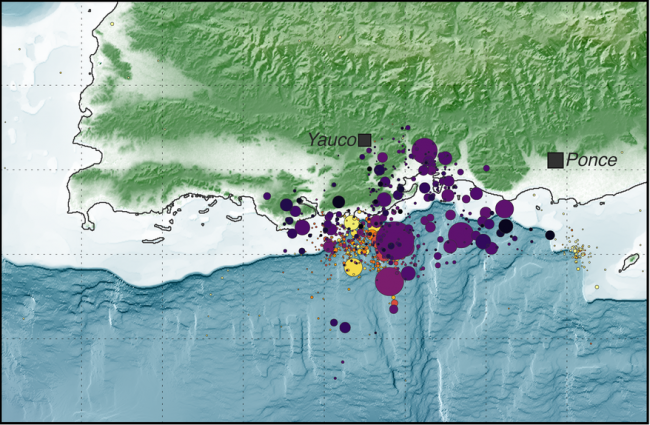Puerto's Richter

Margot Valldejuly, a senior at AUP, was woken up on January 7th at 4 a.m. to the terrifying reality that accompanied one of the biggest earthquakes to shake the island of Puerto Rico since 1918.
“I was sleeping in my bed and everything, absolutely everything, started to move,” said Valldejuly. Directly after the house started to tremble, Valldejuly was hit by a medium-sized piece of cement that had fallen on her head and caused what later appeared to be a mild concussion.
Damages are visible in Margot Valldejuly's bedroom after a 6.4 magnitude earthquake struck the island of Puerto Rico. Photo Credit: Margot ValldejulyCompletely paralyzed by fear, Valldejully remained in her bed until her mother, who lives on the second floor of the house, rushed into the room to escort her daughter and family to safety. After about one minute, the earthquake ceased, leaving not only the Valldejuly household but the people of Puerto Rico in a state of alarm and incertitude.
Since December 28, Puerto Rico has experienced more than 1,000 earthquakes ranging from magnitudes of 2.0 to 5.0+ on the Richter Scale. To this day, earthquakes occur primarily in the southern part of the island where Valldejuly and her family live. Residents from the southern coast have evacuated their houses in fear of them collapsing, as so many already have, leaving about 5,000 people sleeping outside under tents or simply the shade of a tree without the necessary resources to live comfortably.
Base camp on the southern coast of Puerto Rico. Photo credit: Twitter User @Efrain99620830“After the first major earthquake, we stayed for two hours in the garden feeling the aftershocks, which I thought might’ve just been in my head. Each time we could hear the neighbors screaming,” recounted Valldejuly. The January 7 earthquake left the island without electricity and with millions of dollars in damage, reminiscent of Hurricane Maria which occurred two years before.
With insufficient infrastructure, especially in historic and time-worn areas of Puerto Rico, many buildings such as schools, churches and houses collapsed causing many injuries and at least one fatality. “There are houses in Puerto Rico that are held up by just four thin pillars that with any natural disaster can easily collapse,” said Valldejuly.
Collapsed house located in the southern city of Guánica. Photo Credit: Fernando Martínez TorresSouthern residents have begged local and federal governments for help, but any aid they do give is scarce and delayed. Recent events, such as the discovery of a warehouse filled with unused and expired supplies from Hurricane Maria, have shown the lack of help from government officials and the loss of trust the people feel towards their own administration.
Puerto Rico is facing a national crisis in which fear, a general mistrust towards people in power, and a decrease in hope run rampant. Demonstrators, overwhelmed by indignation and outrage, gathered on Monday calling for the resignation of Governor Wanda Vázquez and the accountability of local officials. The tremors persist and, with each earthquake, the people of Puerto Rico lose even more hope.
“The good thing is that the people from Puerto Rico have shown their resilience since Hurricane Maria," concluded Valldejully. "It is the people that help those in need to overcome disasters and suffering, not the government.”
The future of the island is unforeseeable, but the people of Puerto Rico persevere and fight for their right for a better tomorrow.








